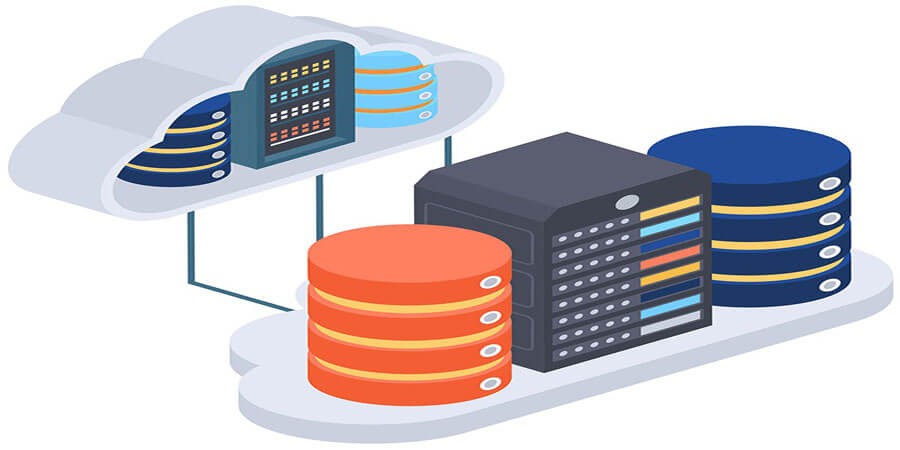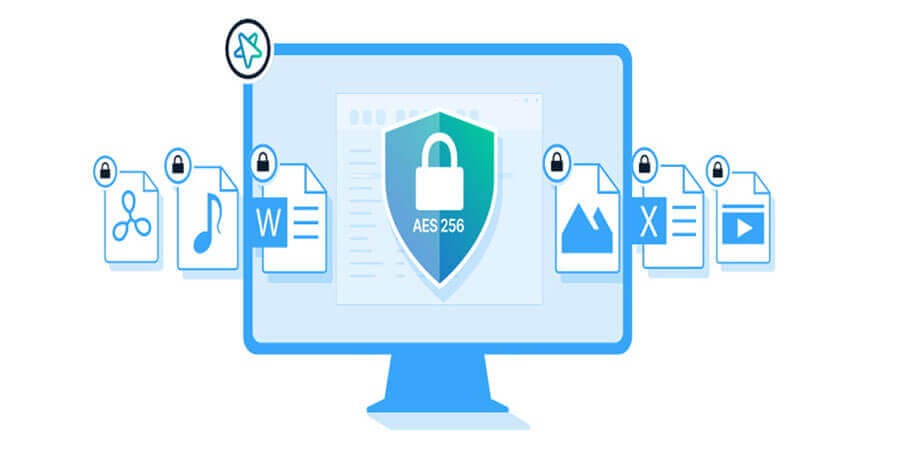

File Transfer Protocols: What You Need to Know About FTP, SFTP, and More
Introduction
In an era where data volumes are skyrocketing, transferring files efficiently, securely, and reliably is a foundational requirement for individuals and businesses alike. Whether you’re hosting a website, collaborating on massive media files, or synchronizing enterprise backups across the globe, choosing the right file transfer protocol (FTP) can make or break your workflow. By 2025, we have more protocols than ever before—each offering unique blends of speed, security, automation, and cross-platform compatibility.
This comprehensive guide dives deep into essential protocols like FTP, SFTP, FTPS, SCP, Rsync, HTTPS, and managed file transfer (MFT) systems. We’ll explore how they evolved, how they differ, and which best suits your needs. Plus, we’ll look at real-world cases, advanced security measures, automation tools, and emerging trends shaping the future of file transfer.
Why File Transfer Protocols Matter
File transfer protocols serve as the invisible backbone connecting devices, users, and servers worldwide. Picking the right protocol ensures:
-
Security: Data remains encrypted and tamper-proof.
-
Speed: Large files can be uploaded or downloaded quickly.
-
Reliability: Reduced risk of corruption or partial transfers.
-
Compliance: Alignment with regulations like HIPAA, GDPR, PCI-DSS.
-
Scalability: Handles growth in data size, user base, or infrastructure.
Ignoring best practices can lead to leaks, corruption, or performance bottlenecks. As multi-cloud and hybrid deployments rise, the significance of robust file transfer methods becomes paramount.
Real-World Example
In 2024, a major European university experienced a data breach traced back to an outdated FTP server. Cybercriminals exploited plaintext credentials to access sensitive research data. This fiasco forced an urgent overhaul to SFTP and MFT solutions across all departments, underscoring how crucial modern, secure file transfer protocols are.
Evolution of File Transfer: Past, Present, and Future
-
1970s - 1980s: The FTP Era
FTP (File Transfer Protocol) emerged as a simple mechanism for transferring data between remote computers. With minimal encryption or authentication, security was virtually non-existent. -
1990s - 2000s: Security Takes Center Stage
The rise of the internet and e-commerce demanded better protection. SSL/TLS encryption gave birth to FTPS, while SSH paved the way for SFTP and SCP. -
2010s: Cloud and Automation
As cloud computing exploded, protocols began integrating with APIs and advanced scripting tools. Tools like Rsync gained popularity for incremental backups. -
2020s to 2025: AI, Blockchain, and Zero Trust
We see quantum-safe encryption research, decentralized transfers (IPFS/Web3), and automated MFT solutions integrated with DevOps pipelines.
Why It Matters
Staying current with file transfer innovation isn’t just about speed—it’s about protecting data integrity, reducing cost overheads, and meeting evolving compliance standards.
Key Concepts Before We Dive into Protocols
-
Client/Server Model
Most file transfer protocols follow a client-server architecture: the client (your PC or script) connects to a remote server hosting the files or receiving your uploads. -
Ports
Communication happens over predefined ports (e.g., 21 for FTP, 22 for SFTP). Firewalls or network policies might block these, so it’s vital to configure them properly. -
Encryption and Authentication
Encryption scrambles data in transit, while authentication confirms the identity of the user or system. Combining strong encryption (AES-256, TLS 1.3) with robust authentication (password + SSH key) is best practice. -
Bandwidth and Latency
Even with the fastest protocol, performance can be throttled by limited bandwidth or high latency connections. Tools like Rsync excel at partial file transfers in low-bandwidth scenarios. -
Compliance Requirements
Industries like healthcare, finance, and e-commerce enforce strict guidelines. Non-compliance can result in hefty fines.
1) FTP (File Transfer Protocol)
Origin: 1970s
Default Port: 21
Security: None built-in (plaintext)
How It Works:
-
FTP creates separate connections for command and data channels.
-
Authentication typically requires a username and password, although it can be configured for anonymous access.
Pros:
-
Simple, widely supported.
-
Lightweight for internal networks where security is not a concern.
Cons:
-
Data and credentials transmitted in plaintext, making it highly insecure over public networks.
-
Firewall-unfriendly due to separate channels (active/passive modes).
Best Use Cases:
-
Legacy environments where encryption is handled separately.
-
Public or anonymous file hosting with no sensitive data.
Example Command
ftp myserver.com
# Then enter username/password to begin interactive session
2) FTPS (FTP over SSL/TLS)
Origin: 1990s
Default Ports: 21 (explicit), 990 (implicit)
Security: SSL/TLS encryption for data and credentials
How It Works:
-
Extends FTP by adding encryption, preventing eavesdropping.
-
Implicit mode assumes TLS from the start, explicit mode negotiates security.
Pros:
-
Familiar to teams used to FTP.
-
Meets compliance for many regulated industries if configured correctly.
Cons:
-
Complex firewall configuration (like FTP).
-
Slight overhead from encryption vs. plain FTP.
Best Use Cases:
-
Banks or institutions mandated to upgrade legacy FTP to an encrypted option.
-
Industries with moderate volumes of automated file transfers.
Example
# Using lftp client
lftp ftps://user@myserver.com
set ssl:verify-certificate no
# Start secure file transfer
3) SFTP (SSH File Transfer Protocol)
Origin: Early 2000s, built upon SSH 2.0
Default Port: 22
Security: End-to-end encryption via SSH
How It Works:
-
Combines file transfer commands (rename, move, delete) with an SSH tunnel.
-
All data, including credentials, is encrypted.
-
Public key authentication or username/password.
Pros:
-
Easy to set up on Linux/Unix systems.
-
One secure channel (port 22) is firewall-friendly.
Cons:
-
Slight overhead from SSH encryption.
-
Not natively compatible with standard FTP clients (though many support SFTP nowadays).
Best Use Cases:
-
Secure backups to VPS or cloud servers.
-
Web hosting environments requiring safe uploads.
-
Enterprise workflows where compliance is key.
Syntax Example
sftp -i ~/.ssh/id_rsa user@myserver.com
# i: specify SSH key, ensures passwordless secure auth
4) SCP (Secure Copy Protocol)
Origin: Also part of SSH suite
Default Port: 22
Security: Uses SSH encryption for file copy commands
How It Works:
-
A simpler approach than SFTP for one-off file copies.
-
Doesn’t offer advanced file management commands (rename, listing, etc.).
Pros:
-
Fast, straightforward for automation scripts.
-
Perfect for CI/CD deployments.
Cons:
-
Lacks the robust functionality of SFTP.
-
Harder to do partial downloads or resume if a transfer breaks.
Best Use Cases:
-
DevOps pipelines moving build artifacts.
-
Automated tasks that only need push/pull of files.
Example
scp -i ~/.ssh/deploy_key dist.zip user@myserver.com:/var/www/html/
5) Rsync (Remote Sync)
Origin: Mid-1990s on Unix
Encryption: Typically run over SSH
Differential Transfer: Only changed bytes are sent, saving bandwidth
Pros:
-
Extremely efficient for large datasets.
-
Handles partial updates, compression, and robust resume.
Cons:
-
Steeper learning curve for advanced options.
-
Doesn’t natively handle authentication unless layered with SSH.
Use Cases:
-
Incremental system backups.
-
Replicating data across data centers.
-
Cron-based nightly syncs.
Example
rsync -avz -e ssh /local/path user@remoteserver:/remote/dir
# a: archive, v: verbose, z: compress
6) HTTPS and REST APIs
How It Works:
-
Uses port 443 with TLS encryption.
-
Communicates via HTTP requests, often in JSON or XML.
Pros:
-
Universally accepted, firewall-friendly.
-
Great for web-based uploads and services (e.g., Google Drive, Dropbox).
Cons:
-
Generally slower for huge files unless chunked properly.
-
Lacks direct OS-level integration without specialized tools.
Use Cases:
-
Web apps, SaaS platforms, direct user file uploads.
-
Microservices exchanging data over REST.
7) MFT (Managed File Transfer) and AS2
MFT Platforms: Offer dashboards, logging, compliance checks, scheduling, encryption, often used by large enterprises.
AS2: Encrypted transmission over HTTP(S), used heavily in EDI (electronic data interchange) contexts.
Pros:
-
End-to-end solutions with auditing and user management.
-
Integration with enterprise authentication (LDAP/AD) and SSO.
Cons:
-
Can be expensive or complex to set up.
-
Overkill for simple personal usage.
Use Cases:
-
Healthcare, finance, government agencies.
-
Supply chain management, real-time order processing.
Industry-Specific Use Cases
-
Healthcare (HIPAA Compliance):
-
Typically use SFTP/FTPS for storing patient records.
-
MFT platforms ensure PHI encryption and logging.
-
Failure to secure transfers leads to massive fines.
-
-
Finance (PCI-DSS, SOX):
-
FTPS or SFTP for secure batch transactions.
-
Might implement PGP encryption on top for high-stakes transfers.
-
-
Software Development:
-
SCP or Rsync in DevOps pipelines for build deployment.
-
Git-based systems integrated with CI/CD tools.
-
-
E-Commerce:
-
HTTPS for front-end user uploads.
-
SFTP for syncing inventory across partner systems.
-
-
Government / Defense:
-
MFT solutions with air-gapped networks.
-
May require FIPS 140-2 validated encryption modules.
-
Integrating File Transfer with Automation and Monitoring
Why Automate?
-
Reduce human error.
-
Schedule regular backups.
-
Trigger events on file arrival.
Tools and Approaches:
-
Cron Jobs (Linux) or Task Scheduler (Windows): Automate nightly transfers using Rsync or SCP.
-
CI/CD Pipelines: GitHub Actions or GitLab CI for deployment, using secure copy (SCP) to push builds.
-
Systemd Timers: On Linux, systemd timers are more robust than cron for advanced scheduling.
-
SaaS Platforms: Zapier, Power Automate, or Make (Integromat) let you connect apps and cloud storage with minimal coding.
Monitoring:
-
Nagios / Zabbix: Track server uptime, watch for port closures.
-
ELK Stack: Collect logs from SFTP or MFT solutions, analyze for patterns.
-
Email/SMS Alerts: Notify admins of transfer failures or suspicious anomalies.
Common Errors and How to Avoid Them
-
Timeouts
-
Cause: Idle sessions, firewalls dropping idle connections.
-
Solution: Enable keepalive or configure server idle timeout.
-
-
Permission Denied
-
Cause: Incorrect file ownership or group.
-
Solution: Use
chown,chmod, or setfacl. Review user permissions.
-
-
Port Blocked
-
Cause: Firewall not allowing inbound/outbound on default port.
-
Solution: Use passive mode (FTPS) or open specific ports.
-
-
Incomplete Transfers
-
Cause: Network interruption or client crash.
-
Solution: Enable resume support in clients like FileZilla or WinSCP.
-
-
Password Mismanagement
-
Cause: Sharing or storing passwords in plaintext.
-
Solution: Use password managers (Bitwarden, KeePass) and rotate regularly.
-
Advanced Troubleshooting
-
Check logs: SFTP logs (/var/log/auth.log on Linux) or MFT dashboards.
-
Try alternative protocol: If FTPS is troublesome behind a NAT firewall, switch to SFTP.
Security Enhancements You Should Implement
-
Public Key Authentication
-
Avoid password-based logins.
-
Restrict root logins over SSH.
-
-
Two-Factor Authentication
-
Required for web-based SFTP interfaces or MFT portals.
-
-
File Integrity Monitoring (FIM)
-
Monitor checksums for tampering or unauthorized changes.
-
-
SSH Hardening
-
Use
AllowUsersdirective in sshd_config. -
Disable older ciphers, e.g.,
arcfourorcbc.
-
-
Log Encryption
-
Prevent attackers from erasing logs after a breach.
-
Real-World Workflow Examples
-
Global Enterprise Sync
-
Scenario: A multinational company replicating databases among branches in Europe, Asia, and North America.
-
Solution: Leverage Rsync via SSH for deltas, scheduled with cron. Integrate with an MFT platform for audit logs.
-
Outcome: Bandwidth usage cut by 60% due to incremental sync.
-
-
Indie Game Developer Deployment
-
Scenario: A small studio distributing game builds to publishers.
-
Solution: Use SCP in a CI pipeline (GitHub Actions) to push compiled builds to each partner’s server.
-
Outcome: Automated, consistent, and secure file deliveries.
-
-
University Research Collaboration
-
Scenario: A research lab storing large genomic datasets (1TB+) across multiple HPC clusters.
-
Solution: SFTP for quick connections, Rsync for partial updates, and offline LTO tapes for archival.
-
Outcome: Achieved robust redundancy, secure compliance with grants.
-
Training Your Team and Building Transfer Policies
Even the most secure protocols fail if users are unaware of best practices.
Recommended Training Modules:
-
Basic File Transfer 101: Terms, command-line usage, encryption basics.
-
Secure Practices: Using SSH keys, avoiding plaintext passwords.
-
Recognizing Phishing: Attackers might impersonate “file transfer requests.”
-
Protocols & Tools: Hands-on with FileZilla, WinSCP, or MFT portals.
Policy Outlines:
-
File Retention Policy: Determine how long transfers or logs remain accessible.
-
Protocol Selection Matrix: SFTP for code, FTPS for batch finance data, HTTPS for web uploads.
-
Access Request Workflows: Requiring manager approval for new SFTP accounts.
-
Onboarding: New employees get an overview of secure file transfer processes.
🧠 Tip: Rotate SSH keys or passwords every 60-90 days to reduce risk.
The Future: Quantum-Safe and Decentralized Transfers
Looking ahead to the second half of the 2020s:
-
Quantum-Safe Encryption: Standards like CRYSTALS-Kyber or Dilithium might replace classical RSA/ECC in high-security environments.
-
Blockchain/Decentralized: IPFS or zero-knowledge Web3 solutions providing censorship resistance and content-addressable storage.
-
AI-Driven Routing: Intelligent protocols that choose the fastest or most secure path in real-time, analyzing network conditions.
-
Zero Trust Architecture: Micro-segmentation ensures each file request is authorized individually, limiting lateral movement.
Although these technologies are in varying stages of maturity, they hint at a future where data flows seamlessly while maintaining robust security.
Conclusion
In 2025, efficient and secure file transfers are indispensable for individuals, small teams, and large enterprises alike. Whether you need simplicity (FTP), a legacy upgrade (FTPS), an all-in-one secure solution (SFTP), or advanced incremental syncing (Rsync), there’s a protocol tailored to your situation. MFT platforms offer deeper compliance, automation, and auditing. Meanwhile, new frontiers like quantum-safe encryption and decentralized frameworks promise to reshape how we move data in the decades to come.
Choosing a protocol isn’t just about speed—it’s about safeguarding your intellectual property, customer data, and operational continuity. By implementing best practices, training your team, and staying alert to emerging threats and opportunities, you’ll ensure your file transfers remain a strength rather than a vulnerability. Remember: in a hyperconnected world, how you move your data is often as important as the data itself.
Popular articles




Comments (0)